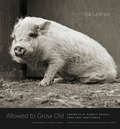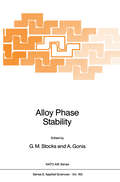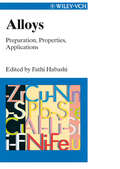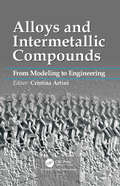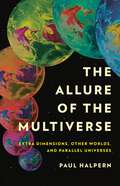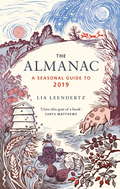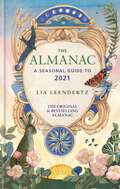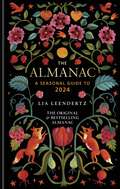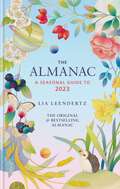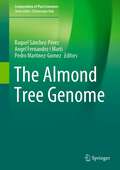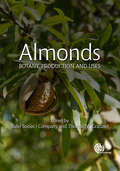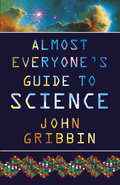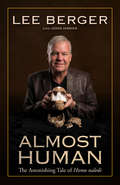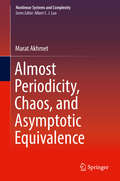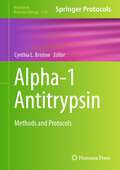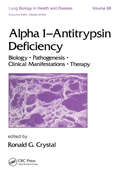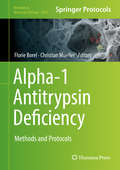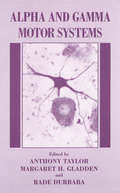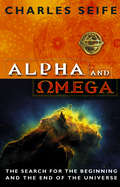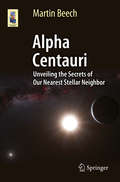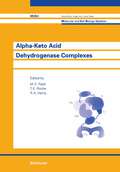- Table View
- List View
Allowed to Grow Old: Portraits of Elderly Animals from Farm Sanctuaries
by Isa LeshkoThere’s nothing quite like a relationship with an aged pet—a dog or cat who has been at our side for years, forming an ineffable bond. Pampered pets, however, are a rarity among animals who have been domesticated. Farm animals, for example, are usually slaughtered before their first birthday. We never stop to think about it, but the typical images we see of cows, chickens, pigs, and the like are of young animals. What would we see if they were allowed to grow old? Isa Leshko shows us, brilliantly, with this collection of portraits. To create these portraits, she spent hours with her subjects, gaining their trust and putting them at ease. The resulting images reveal the unique personality of each animal. It’s impossible to look away from the animals in these images as they unforgettably meet our gaze, simultaneously calm and challenging. In these photographs we see the cumulative effects of the hardships of industrialized farm life, but also the healing that time can bring, and the dignity that can emerge when farm animals are allowed to age on their own terms. Each portrait is accompanied by a brief biographical note about its subject, and the book is rounded out with essays that explore the history of animal photography, the place of beauty in activist art, and much more. Open this book to any page. Meet Teresa, a thirteen-year-old Yorkshire Pig, or Melvin, an eleven-year-old Angora Goat, or Tom, a seven-year-old Broad Breasted White Turkey. You’ll never forget them.
Alloy Phase Stability (NATO Science Series E: #163)
by G. M. Stocks A. GonisOne of the ultimate goals of materials research is to develop a fun damental and predictive understanding of the physical and metallurgical properties of metals and alloys. Such an understanding can then be used in the design of materials having novel properties or combinations of proper ties designed to meet specific engineering applications. The development of new and useful alloy systems and the elucidation of their properties are the domain of metallurgy. Traditionally, the search for new alloy systems has been conducted largely on a trial and error basis, guided by the skill and intuition of the metallurgist, large volumes of experimental data, the principles of 19th century thermodynamics and ad hoc semi-phenomenological models. Recently, the situation has begun to change. For the first time, it is possible to understand the underlying mechanisms that control the formation of alloys and determine their properties. Today theory can begin to offer guidance in predicting the properties of alloys and in developing new alloy systems. Historically, attempts directed toward understanding phase stability and phase transitions have proceeded along distinct and seemingly diverse lines. Roughly, we can divide these approaches into the following broad categories. 1. Experimental determination of phase diagrams and related properties, 2. Thermodynamic/statistical mechanical approaches based on semi phenomenological models, and 3. Ab initio quantum mechanical methods. Metallurgists have traditionally concentrated their efforts in cate gories 1 and 2, while theoretical physicists have been preoccupied with 2 and 3.
Alloys: Preparation, Properties, Applications
by Fathi HabashiIn industry very few metals are used in their pure form; the majority are employed as a combination of a metal with other metals, nonmetals or metalloids. In this way some specific properties are improved, making the alloy more attractive than the pure metal. The present work comprises essential information on alloys in one compact volume. Classification, properties, preparation, applications, and economic aspects are discussed for alloy steels, primary-metal alloys, light-metal alloys, and some other alloy systems. The work is based on more than 30 articles from Ullmann's Encyclopedia of Industrial Chemistry and represents the effort of over 60 specialists. It supplies hundreds of top-quality illustrations, diagrams, and charts and provides hand-picked references for further study. An introductory overview of the subject is provided by the editor. The book is a handy yet authoritative reference work for the practicing metallurgist, but also for physical metallurgists, engineers and scientists in industry.
Alloys and Intermetallic Compounds: From Modeling to Engineering
by Cristina ArtiniThis book focuses on the role of modeling in the design of alloys and intermetallic compounds. It includes an introduction to the most important and most used modeling techniques, such as CALPHAD and ab-initio methods, as well as a section devoted to the latest developments in applications of alloys. The book emphasizes the correlation between modeling and technological developments while discussing topics such as wettability of Ultra High Temperature Ceramics by metals, active brazing of diamonds to metals in cutting tools, surface issues in medicine, novel Fe-based superconductors, metallic glasses, high entropy alloys, and thermoelectric materials.
Alloys and Intermetallic Compounds: From Modeling to Engineering
by Cristina ArtiniThis book focuses on the role of modeling in the design of alloys and intermetallic compounds. It includes an introduction to the most important and most used modeling techniques, such as CALPHAD and ab-initio methods, as well as a section devoted to the latest developments in applications of alloys. The book emphasizes the correlation between modeling and technological developments while discussing topics such as wettability of Ultra High Temperature Ceramics by metals, active brazing of diamonds to metals in cutting tools, surface issues in medicine, novel Fe-based superconductors, metallic glasses, high entropy alloys, and thermoelectric materials.
The Allure of the Multiverse: Extra Dimensions, Other Worlds, and Parallel Universes
by Paul Halpern&“A rich and rewarding history of one of the most astounding ideas in physics and astronomy&” (Marcia Bartusiak) – that the universe we know isn&’t the only one Our books, our movies—our imaginations—are obsessed with extra dimensions, alternate timelines, and the sense that all we see might not be all there is. In short, we can&’t stop thinking about the multiverse. As it turns out, physicists are similarly captivated. In The Allure of the Multiverse, physicist Paul Halpern tells the epic story of how science became besotted with the multiverse, and the controversies that ensued. The questions that brought scientists to this point are big and deep: Is reality such that anything can happen, must happen? How does quantum mechanics &“choose&” the outcomes of its apparently random processes? And why is the universe habitable? Each question quickly leads to the multiverse. Drawing on centuries of disputation and deep vision, from luminaries like Nietzsche, Einstein, and the creators of the Marvel Cinematic Universe, Halpern reveals the multiplicity of multiverses that scientists have imagined to make sense of our reality. Whether we live in one of many different possible universes, or simply the only one there is, might never be certain. But Halpern shows one thing for sure: how stimulating it can be to try to find out.
The Almanac: A Seasonal Guide to 2019
by Lia LeendertzTHE ORIGINAL & BESTSELLING ALMANAC 'I love this gem of a book' - Cerys Matthews 'This book is your bible' - The Independent '...it already feels like an annual necessity' - India Knight 'Joyous' - Allan Jenkins 'Updated for 2019 with more lovely ideas to celebrate the seasons' - Gardens Illustrated'A charming book. This is a real gem of a gift' - Sunday Express, S Magazine. A perfect toolkit connecting with the world around us and the year ahead as it unfolds - all in a compact and pocket size that just begs you to pick it up and browse - Reckless Gardener or Its range of information and depth of understanding of our seasons is priceless - Reckless GardenerThe Almanac: A Seasonal Guide to 2019 reinvents the tradition of the rural almanac for a new audience. It gives you the tools and inspiration you need to celebrate, mark and appreciate each month of the year in your own particular way. Divided into the 12 months, a set of tables each month gives it the feel and weight of a traditional almanac, providing practical information that gives access to the outdoors and the seasons, perfect for expeditions, meteor-spotting nights and beach holidays. There are also features on each month's unique nature, such as the meteor shower of the month, beehive behaviour, folklore and stories, seasonal recipes and charts tracking moon phases and tides. Why not try identifying trees by their bare buds in January; Enjoy Buttermilk scones with orangle blossom & honey butter in June; Discover the Chinese New Year story of 'The great race' in February.You will find yourself referring to the almanac all year long, revisiting it again and again, and looking forward to the next edition as the year draws to a close.Praise for The Almanac: A Seasonal Guide to 2018:'The perfect companion to the seasons' - India Knight'A richly layered book of events, celebrations and everyday information that together create a beautiful, fascinating resource . . . In the single month I've had my hands on it, the book has quietly "worked".' - Telegraph'Beautifully written, this pocket-sized guide is a labour of love and will remind you to appreciate little moments throughout the year.' - Gardens Illustrated'Elegant . . . an ideal stocking filler.' - The English Garden
The Almanac: A Seasonal Guide to 2021
by Lia LeendertzWelcome to The Almanac: A Seasonal Guide to 2021. If you are new to The Almanac then welcome; if you are a regular reader then hello! The Almanac is about celebrating the unfolding year in all its various facets. The old dependables which I include every year are back: moon phases, sun rises and sets, tide time tables and the sky at night. As ever there are seasonal recipes and monthly gardening tips for the flower and vegetable garden too, as well as a bit of folklore, and nature and a song for each month.This year's edition has a theme: movement, migration and pilgrimage. This was not a reaction to the unsettling events of last year - it was half written by the time Covid-19 hit - but writing it from lockdown did give me a heightened appreciation of the way in which Britain and Ireland have always and continue to be places of movement, and are intimately connected to the rest of the world. You will find within this book migration tales for each month of this year, but I have also searched out seasonal tales of human movement, and included a pilgrimage for each month, some ancient, some current, all underlining the spiritual benefits of putting one foot in front of the other. Every month I have included a method of navigating using the stars, sun or moon, so you can find your way around in the dark (or just look out of your window and know where south is). And our monthly folk songs are all shanties this year, work songs with movement at their very heart, created to coordinate muscle power to drive sailing ships backwards and forwards across the Atlantic Ocean, and containing influences from the eastern seaboard of the US down to the Caribbean and beyond mixed with British and Irish folk traditions. These songs are stitched through with movement and travel, as is this Almanac.PRAISE FOR THE ALMANAC: A SEASONAL GUIDE'The perfect companion to the seasons' - India Knight'This book is your bible' - The Independent'An ideal stocking filler' - The English Garden'I love this gem of a book' - Cerys Matthews'Indispensable' - Sir Bob Geldof
The Almanac: A Seasonal Guide To 2018 (Almanac)
by Lia LeendertzTHE ORIGINAL & BESTSELLING ALMANACReconnect with the seasons in Britain and Ireland with this month-by-month guide to the world around us - including tide tables, sunrises and moon phases; garden feasts, wildlife and folklore; seasonal recipes, snacks and more.The Almanac: A Seasonal Guide to 2024 gives you the tools and inspiration you need to celebrate, mark and appreciate each month of the year in your own particular way.Divided into the 12 months, a set of tables each month gives it the feel and weight of a traditional almanac, providing practical information that gives access to the outdoors and the seasons, perfect for expeditions, meteor-spotting nights and beach holidays. This year's edition focuses on the natural wonders of the garden, celebrating the beautiful flora and fauna at your doorstep. There are also features on each month's unique nature, plus a flower and a snack of the month.You will find yourself referring to The Almanac all year long, revisiting it again and again, and looking forward to the next edition as the year draws to a close.PRAISE FOR THE ALMANAC:'Lia Leendertz's classic almanac never fails to delight' - The Herald'It's a perfect Christmas present' - Allan Jenkins, The Observer'The perfect companion to the seasons' - India Knight'Indispensable' - Sir Bob Geldof'This book is your bible' - The Independent'I love this gem of a book' - Cerys Matthews
The Almanac: THE SUNDAY TIMES BESTSELLER (Almanac)
by Lia LeendertzTHE ORIGINAL & SUNDAY TIMES BESTSELLING ALMANAC Reconnect with the seasons in Britain and Ireland with this month-by-month guide to the world around us - including key dates, tide tables and garden tasks; constellations and moon phases; sunrises, folk songs, seasonal recipes plus a 'bun of the month'; and - because 2023 will be a good year for planet spotting - the solar system and the zodiac.The Almanac: A Seasonal Guide to 2023 gives you the tools and inspiration you need to celebrate, mark and appreciate each month of the year in your own particular way. Divided into the 12 months, a set of tables each month gives it the feel and weight of a traditional almanac, providing practical information that gives access to the outdoors and the seasons, perfect for expeditions, meteor-spotting nights and beach holidays. There are also features on each month's unique nature, with this instalment following the swirling micro world of the garden pond through the year.You will find yourself referring to The Almanac all year long, revisiting it again and again, and looking forward to the next edition as the year draws to a close.This year's edition is illustrated by artist Whooli Chen.The geographical scope of The Almanac is Britain and IrelandPRAISE FOR THE ALMANAC:'Lia Leendertz's classic almanac never fails to delight' - The Herald'It's a perfect Christmas present' - Allan Jenkins, The Observer'The perfect companion to the seasons' - India Knight'Indispensable' - Sir Bob Geldof'This book is your bible' - The Independent'I love this gem of a book' - Cerys Matthews
The Almond Tree Genome (Compendium of Plant Genomes)
by Raquel Sánchez-Pérez Ángel Fernández i Martí Pedro Martínez-GómezThis book brings together the latest information on almond genomics and transcriptomics, with a particular focus on cutting-edge findings, tools, and strategies employed in genome sequencing and analysis with regard to the most important agronomic traits. Cultivated almond [(Prunus dulcis (Miller) D. A. Webb, syn. Prunus amygdalus Batsch., Amygdalus communis L., Amygdalus dulcis Mill.)] is a tree crop producing seeds of great economic interest, and adapted to hot and dry climates. Domesticated in Southeast Asia, its small diploid genome and phenotypic diversity make it an ideal model to complement genomics studies on peach, generally considered to be the reference Prunus species. Both represent consanguineous species that evolved in two distinct environments: warmer and more humid in the case of peach, and colder and xerophytic for almond. The advent of affordable whole-genome sequencing, in combination with existing Prunus functional genomics data, has now made it possible to leverage the novel diversity found in almond, providing an unmatched resource for the genetic improvement of this species.
Almonds: Botany, Production and Uses (Botany, Production and Uses)
by James Adaskaveg José M Alonso José M Ansón Octavio Arquero Roger A Baldwin Ignasi Batlle Mireia Bordàs Patrick Brown Mariano Cambra Miguel A. Cambra Joseph H Connell Robert Curtis Federico Dicenta David A. Doll Henri Duval Iban Eduardo Daniel Esmenjaud José L Carbó Maria T Espiau Antonio J. Felipe Angel Fernández i Martí Carolina Font i Forcada Helga Förster Luis Iannamico Santiago Izquierdo Sat Darshan Khalsa Ossama Kodad Maria M. López Carmen Martínez Pedro Martínez-Gómez Saiful Muhammad Eva Núñez Seoane Antonio Olmos Ana Palacio-Bielsa Vicente Pallás Katherine Pope Gregory Reighard Maria J Rubio-Cabetas Ned T. Ryan Sebastián Sáa Silva Raquel Sánchez-Pérez Francisco J. Vargas Steve Weinbaum Michelle Wirthensohn Shu-Biao Wu Frank G Zalom Alexis VerdúThis book provides a comprehensive overview of almond growing from a scientific and horticultural perspective, covering botany, production, processing and industrial uses. Almonds are an important crop; they are highly regarded for their flavour, nutritional properties and culinary uses, and almond oil is used widely in food, cosmetic and pharmaceutical production. They are easy to transport and have long storability, facilitating global dissemination. Demand is constantly increasing and global production has more than doubled in the last 20 years. The popularity of almonds and the increase in demand has required new plantings and a response to ongoing changes in cultural and climatic conditions. Almonds: Botany, Production and Uses meets the need for up-to-date information on this crop and covers: · botany and taxonomy · cultivation, genetics and breeding · propagation, orchard management and harvesting · pests and diseases · nutrition, marketing and utilization Authored by an international team of experts and presented in full colour throughout, this book is an essential resource for academic researchers and extension workers, as well as growers, orchard managers and industry personnel.
Almost Everyone's Guide to Science
by Dr John GribbinJohn Gribbin is one of the few science writers who is equally comfortable writing about biology as he is about physics, and this beginner's guide will take the reader through the basics and the fundamental issues of the crucial areas of modern science, from the birth of the universe through to the evolution of our own species, the nature of human behaviour and the workings of our minds.Crucially, the book will not only provide an overview of the central areas in a single volume, but will also explain how the areas link up, what evolutionary theory has to say about how we think, how sub-atomic particles came into being in the Big Bang and atoms in stars.
Almost Human: The astonishing tale of Homo naledi
by Lee BergerNearly a decade ago nine-year-old Matthew Berger stumbled across an ancient human collarbone while exploring among the caves of the Cradle of Humankind, north of Johannesburg. His father, paleoanthropologist Lee Berger, thought they had made the discovery of a lifetime; little did he know that five years later the same site would yield for him an even more significant find. In a sunless cave, more than thirty meters underground, lay the bones of individuals, fragments of skeletons unlike those ever seen before. With a team to make the perilous journey through rock channels and crevices, the bones were brought to the surface, and the true significance of the discovery became clear. We had a new ancestor; he would call this one Homo naledi. Fresh from this expedition, Berger and his colleague Josh Hawks share the thrill of discovery and the challenge of new ideas that dare to probe our deep-set understanding of who we are and how we got here. A gripping tale of science and exploration, Almost Human is an account of our ever-changing human story.
Almost Periodicity, Chaos, and Asymptotic Equivalence (Nonlinear Systems and Complexity #27)
by Marat AkhmetThe central subject of this book is Almost Periodic Oscillations, the most common oscillations in applications and the most intricate for mathematical analysis. Prof. Akhmet's lucid and rigorous examination proves these oscillations are a "regular" component of chaotic attractors. The book focuses on almost periodic functions, first of all, as Stable (asymptotically) solutions of differential equations of different types, presumably discontinuous; and, secondly, as non-isolated oscillations in chaotic sets. Finally, the author proves the existence of Almost Periodic Oscillations (asymptotic and bi-asymptotic) by asymptotic equivalence between systems. The book brings readers' attention to contemporary methods for considering oscillations as well as to methods with strong potential for study of chaos in the future. Providing three powerful instruments for mathematical research of oscillations where dynamics are observable and applied, the book is ideal for engineers as well as specialists in electronics, computer sciences, robotics, neural networks, artificial networks, and biology.Distinctively combines results and methods of the theory of differential equations with thorough investigation of chaotic dynamics with almost periodic ingredients;Provides all necessary mathematical basics in their most developed form, negating the need for any additional sources for readers to start work in the area;Presents a unique method of investigation of discontinuous almost periodic solutions in its unified form, employed to differential equations with different types of discontinuity;Develops the equivalence method to its ultimate effective state such that most important theoretical problems and practical applications can be analyzed by the method.
Alpha-1 Antitrypsin: Methods and Protocols (Methods in Molecular Biology #2750)
by Cynthia L. BristowThis volume provides a collection of protocols that will allow researchers to further explore the multiple, fascinating activities of Alpha-1 Antitrypsin (AAT) isoforms in innate immunity, and gene therapy. Written in the highly successful Methods in Molecular Biology series format, chapters include introductions to their respective topics, lists of the necessary materials and reagents, step-by-step, readily reproducible laboratory protocols, and tips on troubleshooting and avoiding known pitfalls. Authoritative and cutting-edge, Alpha-1 Antitrypsin: Methods and Protocols aims to ensure successful results in the further study of this vital field.
Alpha 1 - Antitrypsin Deficiency: Biology-Pathogenesis-Clinical Manifestations-Therapy
by Ronald G. CrystalProviding a broad overview of basic and clinical aspects of alpha 1-antitrypsin (a 1AT) deficiency, this up-to-date reference discusses the complex pathobiological processes underlying the pathogenesis of a1AT deficiency, describes the a1AT gene and its promoter, and details specific therapies to prevent the major clinical manifestations of the dis
Alpha-1 Antitrypsin Deficiency: Methods and Protocols (Methods in Molecular Biology #1639)
by Florie Borel and Christian MuellerThis volume provides protocols that expand on the latest alpha-1-antitrypsin (AAT) research. The chapters in this book are divided in to three sections: Part I is dedicated to patient-oriented research; part II discusses animal models; and Part III focuses on in vitro studies. Written in the highly successful Methods in Molecular Biology series format, chapters include introductions to their respective topics, lists of the necessary materials and reagents, step-by-step, readily reproducible laboratory protocols, and tips on troubleshooting and avoiding known pitfalls. Cutting-edge and authoritative, Alpha-1 Antitrypsin Deficiency: Methods and Protocols is a valuable resource for researchers, students, and clinican-scientists interested in AAT deficiency, as well as anyone working in the fields of pulmonology and hepatology.
Alpha and Beta emissions (large print)
by RnibThere are two labelled diagrams on this page. The image at the top of the page shows the creation of an alpha particle, the image at the bottom, a beta particle. There is a locator dot shown, which will be at the top left of the page when the image is the correct way up. Each of the images is surrounded by a dashed line image border. In the diagram at the top of the page the nucleus at the left of the page is emitting an alpha particle and so changes from Thorium to Radium. This is shown in the formula in the bottom of the diagram. In the diagram at the bottom of the page the nucleus at the left of the page is emitting a beta particle and so changes from Potassium to Calcium. This is shown in the formula in the bottom of the diagram.
Alpha and Beta emissions (UEB contracted)
by RnibThere are two labelled diagrams on this page. The image at the top of the page shows the creation of an alpha particle, the image at the bottom, a beta particle. There is a locator dot shown, which will be at the top left of the page when the image is the correct way up. Each of the images is surrounded by a dashed line image border. In the diagram at the top of the page the nucleus at the left of the page is emitting an alpha particle and so changes from Thorium to Radium. This is shown in the formula in the bottom of the diagram. In the diagram at the bottom of the page the nucleus at the left of the page is emitting a beta particle and so changes from Potassium to Calcium. This is shown in the formula in the bottom of the diagram.
Alpha and Beta emissions (UEB uncontracted)
by RnibThere are two labelled diagrams on this page. The image at the top of the page shows the creation of an alpha particle, the image at the bottom, a beta particle. There is a locator dot shown, which will be at the top left of the page when the image is the correct way up. Each of the images is surrounded by a dashed line image border. In the diagram at the top of the page the nucleus at the left of the page is emitting an alpha particle and so changes from Thorium to Radium. This is shown in the formula in the bottom of the diagram. In the diagram at the bottom of the page the nucleus at the left of the page is emitting a beta particle and so changes from Potassium to Calcium. This is shown in the formula in the bottom of the diagram.
Alpha and Gamma Motor Systems
by R. Durbaba M. H. Gladden Anthony TaylorThe Sherrington School of Physiology at St. Thomas' Hospital provided a natural venue for four days of enthusiastic debate on Sherrington's Final Common Path -the alpha motoneurone and related matters; Sherrington himself held a lecturership at St. Thomas' just over a century ago. The occasion was a happy one. Most participants already knew each other, the topics were familiar, the discussion was vigorous and critical but without personal rancor. The program had set out to encourage debate with 'critiques' both of the oral papers and the posters; their inclusion in the present volume helps to show where we are standing on rock rather than sand. In spite of a venerable history some surprisingly simple matters remain controversial, such as the information content of the signals from the Golgi tendon organs. To those working on alpha and gamma motoneurones and their control this volume provides an essential up-dating. Classical problems continue to be attacked on a broad front; advance is steady and continuous, a swelling tide rather than a sudden view of the summit. But in some sectors the difficulties are so great that to the outsider little might seem to change, the same battles continuing; but even here, the terms of debate change and concensus develops. Other branches of biology claim breakthrough upon breakthrough from the routine application of the new technologies, so we have to be the first to ask whether our classical approach to science can still be justified.
Alpha And Omega: The Search For The Beginning And The End Of The Universe
by Charles SeifeSince A BRIEF HISTORY OF TIME scientists have been in the midst of a revolution in cosmology. Gradually, astronomers and physicists are answering questions that have plagued mankind since prehistory: how was the universe born, how will it end? They are even now peering into the cradle of the universe - and into its grave. By the beginning of next year, scientists will have a clue to some of the answers. These will be among the greatest triumphs of science.This book tells that story and will reveal results of the most advanced experiments in cosmology ever conducted. It's a tale of men solving the insoluble, of the controversy and anger of rivals after the same goal. Even more thrillingly - it is a lucid explanation of new scientific ideas that stretch man's powers of understanding to their highest levels.
Alpha Centauri: Unveiling the Secrets of Our Nearest Stellar Neighbor (Astronomers' Universe)
by Martin BeechAs our closest stellar companion and composed of two Sun-like stars and a third small dwarf star, Alpha Centauri is an ideal testing ground of astrophysical models and has played a central role in the history and development of modern astronomy—from the first guesses at stellar distances to understanding how our own star, the Sun, might have evolved. It is also the host of the nearest known exoplanet, an ultra-hot, Earth-like planet recently discovered.Just 4.4 light years away Alpha Centauri is also the most obvious target for humanity’s first directed interstellar space probe. Such a mission could reveal the small-scale structure of a new planetary system and also represent the first step in what must surely be humanity’s greatest future adventure—exploration of the Milky Way Galaxy itself.For all of its closeness, α Centauri continues to tantalize astronomers with many unresolved mysteries, such as how did it form, how many planets does it contain and where are they, and how might we view its extensive panorama directly?In this book we move from the study of individual stars to the study of our Solar System and our nearby galactic neighborhood. On the way we will review the rapidly developing fields of exoplanet formation and detection.
Alpha-Keto Acid Dehydrogenase Complexes (Molecular and Cell Biology Updates)
by M. S. Patel T. E. Roche R. A. HarrisFound in all organisms, the alpha-keto acid dehydrogenase complexes have central roles in cellular metabolism and are major sites of regulation. The understanding of the organization, function and regulation of these quintessential multienzyme complexes has been greatly advanced by studies employing molecular biology and biophysical techniques. Although these enzyme systems have some features in common, their diversity in fulfilling unique organism - or tissue - specific roles is truly amazing. These systems have medical importance in areas ranging from defects in regulation (linked to diabetes, heart disease, obesity, nutrition defects), to inherited diseases (inborn errors, maple syrup urine disease) to acquired immune diseases (primary biliary cirrhosis). This book brings together wide-ranging recent findings on the structure(function relationships, gene regulation, and genetic defects of the alpha-keto acid dehydrogenase complexes, namely the pyruvate dehydrogenase, alpha-ketoglutarate dehydrogenase and the branched-chain alpha-keto acid dehydrogenase complexes. A wide variety of experimental approaches together with new results presented in this book should serve as a resource for beginning to established investigators in the field as well as scientists who are interested in mitochondria, dehydrogenases, kinases, phosphatases, lipoic acid, thiamine pyrophosphate, and enzyme complexes.
